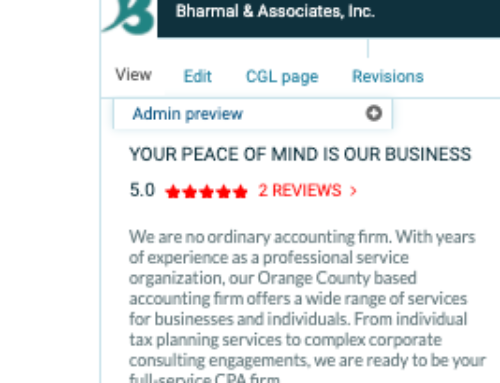Unlock Tax Deductions with a Rental Property Home Office
With the start of a new tax year, you’re probably looking for new tax savings opportunities. As you probably know, establishing a home office for your Schedule C or corporate business creates valuable tax deductions. But it’s not available only for your proprietorship, partnership, or corporate business. If you have rental properties, you can establish a home office to manage your rental properties and deduct the cost on your Schedule E.
Rentals as a Business
The first hurdle is that your rental activities have to qualify as a “trade or business” under the tax law. Luckily for you, that’s relatively simple—you’ll need regular and continuous involvement with your rental activities to meet this requirement. Whether or not your rental activities are a trade or business depends on the facts and circumstances of your particular situation, and court cases give us guidance on that.
Qualifying Area
Your second hurdle is setting aside space in your home that qualifies for the home-office deduction. For this to work, you need to use that space in your residence regularly and exclusively as the principal place of business for your rental activities. This sounds hard, and it was hard—before lawmakers changed the rules to include, as a principal place of business, the space you use for administrative or management activities, provided there is no other fixed location where you conduct substantial administrative or management activities.
Home-Office Deduction
Establishing a rental property home office does two things to your household expenses:
- Turns non-deductible household expenses into tax deductions.
- Moves household expenses normally deductible on Schedule A to your rental properties on Schedule E.
The latter is especially important after passage of the Tax Cuts and Jobs Act
- put a $10,000 limit on your Schedule A state and local tax deductions, and
- lowered the amount of your mortgage on which you deduct mortgage interest from $1 million to $750,000.
Eliminate Commuting
Without a qualifying home office, your mileage from home to your first business stop and then from your last business stop back home is non-deductible commuting mileage. But here is what happens with the rental property’s principal office in your home:
- You have no commuting mileage from your home to and from your rentals, if the rentals are in the area of your tax home (say, within 50 miles).
- You establish your rental property tax home, and if your rentals are outside the area of your tax home, then the mileage from your home to and from the rentals is deductible business mileage because you are traveling outside the area of your tax home.
Real Estate Professional
If you qualify as a real estate professional under the tax law, then you can deduct 100 percent of your rental losses in the year you incur them. But there’s a big hurdle to the tax law classification as a real estate professional. You must show that you spend
- more than 50 percent of your personal service work time in real property trades or businesses in which you materially participate, and
- more than 750 hours of service during the tax year in real property trades or business in which you materially participate.
Having a rental property home office that qualifies as a tax-code-defined principal place of business makes it easier to qualify as a real estate professional, because your time spent on deductible travel to and from your rental properties counts toward the time requirements.
Claiming Your Deduction
The Schedule E instructions not only fail to provide any explanation about where to put your home-office deduction, but they also do not even mention a home office. But the instructions do say that you can deduct ordinary and necessary business expenses, and the home office meets that rule. Also, as established in Curphey (a precedent-setting case), the home office is allowable as an expense against income from a rental business.





